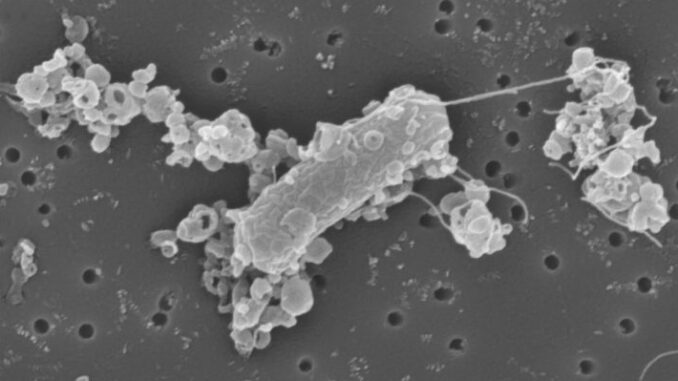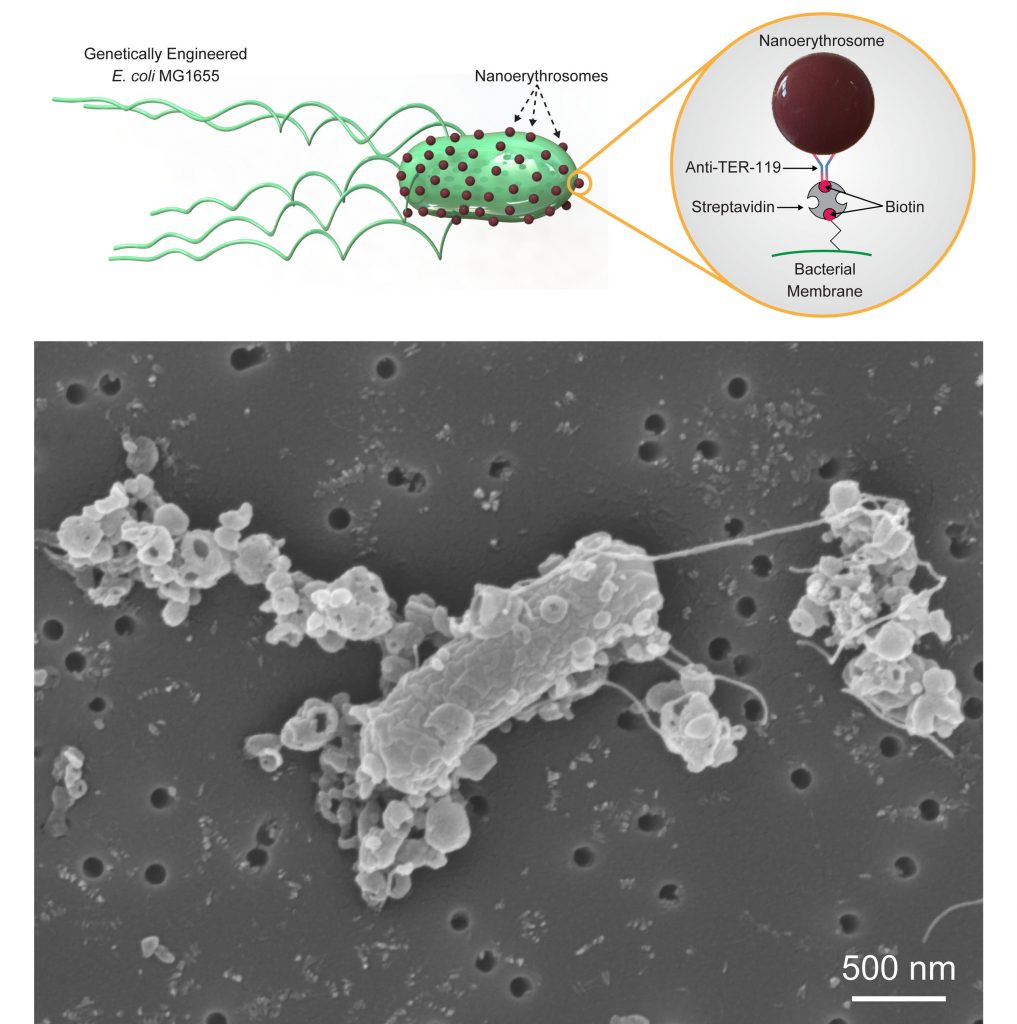
Source: APL Bioengineering
Tiny biohybrid robots on the micrometer scale can swim through the body and deliver drugs to tumors or provide other cargo-carrying functions. The natural environmental sensing tendencies of bacteria mean they can navigate toward certain chemicals or be remotely controlled using magnetic or sound signals.
To be successful, these tiny biological robots must consist of materials that can pass clearance through the body’s immune response. They also have to be able to swim quickly through viscous environments and penetrate tissue cells to deliver cargo.
In a paper published this week in APL Bioengineering, from AIP Publishing, researchers fabricated biohybrid bacterial microswimmers by combining a genetically engineered E. coli MG1655 substrain and nanoerythrosomes, small structures made from red blood cells.
Nanoerythrosomes are nanovesicles derived from red blood cells by emptying the cells, keeping the membranes and filtering them down to nanoscale size. These tiny red blood cell carriers attach to the bacterial membrane using the powerful noncovalent biological bond between biotin and streptavidin. This process preserves two important red blood cell membrane proteins: TER119 needed to attach the nanoerythrosomes, and CD47 to prevent macrophage uptake.

The E. coli MG 1655 serves as a bioactuator performing the mechanical work of propelling through the body as a molecular engine using flagellar rotation. The swimming capabilities of the bacteria were assessed using a custom-built 2D object-tracking algorithm and 20 videos taken as raw data to document their performance.
Biohybrid microswimmers with bacteria carrying red blood cell nanoerythrosomes performed at speeds 40% faster than other E. coli-powered microparticles-based biohybrid microswimmers, and the work demonstrated a reduced immune response due to the nanoscale size of the nanoerythrosomes and adjustments to the density of coverage of nanoerythrosomes on the bacterial membrane.
These biohybrid swimmers could deliver drugs faster, due to their swimming speed, and encounter less immune response, due to their composition. The researchers plan to continue their work to further tune the immune clearance of the microrobots and investigate how they might penetrate cells and release their cargo in the tumor microenvironment.
“This work is an important stepping stone in our overarching goal of developing and deploying biohybrid microrobots for therapeutic cargo delivery,” author Metin Sitti said. “If you decrease the size of red blood cells to nanoscale and functionalize the body of the bacteria, you could obtain additional superior properties that will be crucial in the translation of the medical microrobotics to clinics.”
Reference: Nicole Buss, Oncay Yasa, Yunus Alapan, Mukrime Birgul Akolpoglu, Metin Sitti. Nanoerythrosome-functionalized biohybrid microswimmers. APL Bioengineering, 2020; 4 (2): 026103 DOI: 10.1063/1.5130670
For more information:
Larry Frum
media@aip.org
301-209-3090
For more information please visit APL







Leave a Reply